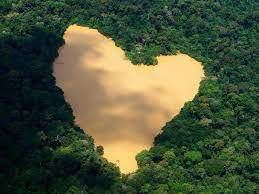Amazan forest
It seems like you might be referring to the "Amazon Rainforest," often simply referred to as the "Amazon," which is the largest tropical rainforest in the world. The Amazon Rainforest is a vast and diverse ecosystem located in South America, primarily within Brazil but also extending into Peru, Colombia, and several other countries. Here are some key points about the Amazon Rainforest:
Biodiversity: The Amazon Rainforest is renowned for its incredible biodiversity, housing a vast array of plant and animal species, many of which are unique and found nowhere else on Earth. It's often referred to as the "lungs of the Earth" due to its role in producing a significant portion of the world's oxygen and absorbing carbon dioxide.
Climate: The Amazon Rainforest has a hot and humid tropical climate, with high levels of rainfall throughout the year. This climate is essential for maintaining the lush vegetation and diverse wildlife of the region.
Flora and Fauna: The rainforest is home to an estimated 390 billion individual trees belonging to around 16,000 species. It's also home to an astonishing variety of animals, including jaguars, toucans, sloths, caimans, and a diverse range of insects and amphibians.
Indigenous Peoples: The Amazon Rainforest is inhabited by numerous indigenous communities, some of which have lived in harmony with the forest for thousands of years. These communities often have deep cultural connections to the land and rely on its resources for their livelihoods.
Threats and Conservation: The Amazon Rainforest is facing significant threats from deforestation, primarily due to activities such as logging, mining, agriculture, and infrastructure development. Deforestation not only disrupts the delicate ecosystem but also contributes to climate change. Efforts to conserve and protect the Amazon involve a combination of government policies, conservation organizations, and international agreements.
Impact on Global Climate: The Amazon Rainforest plays a crucial role in regulating the Earth's climate by absorbing carbon dioxide and releasing oxygen through the process of photosynthesis. It's a key factor in maintaining the balance of greenhouse gases in the atmosphere.
Medicinal Plants: The rainforest is believed to house a vast number of plant species with potential medicinal properties. Indigenous communities have traditionally used various plants for medicinal purposes, and there is ongoing research to explore their potential in modern medicine.
River System: The Amazon River, one of the world's longest rivers, flows through the heart of the rainforest. It's a vital waterway for transportation, trade, and sustenance for local communities.
Twitter https://twitter.com/academicawards
Linked in https://www.linkedin.com/in/harita-r-1b9861224/
Pinterest https://in.pinterest.com/academicawards/
Instagram https://www.instagram.com/harita_2021/
Tumblr https://www.tumblr.com/settings/blog/academicawardsworld
Reddit https://www.reddit.com/user/academicawards
https://academicawards.sciencefather.com/awards
Nomination Link : https://x-i.me/acabha5
Registration Link: https://x-i.me/acareg




Comments
Post a Comment